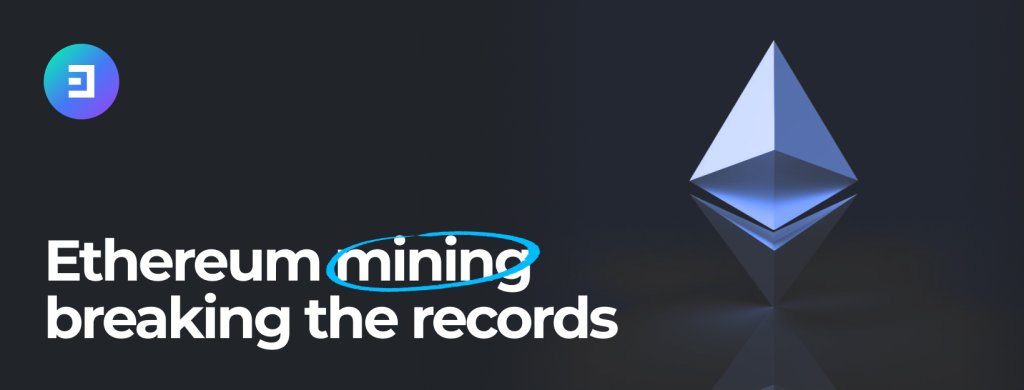Ethereum: Mining difficulty has reached a record level
On Saturday, June 4, the complexity of mining on the Ethereum blockchain reached a historic high. According to Etherscan, the difficulty has reached 15,089,793 terrahashes (TH).
As the process description says on Coinmarketrate.com the higher this value, the more difficult it is to get a block in the network. Thus, this metric is an increasing function of the computing power used by all miners to guarantee the stability of the blockchain.

As shown in the graph, since the introduction of the Chinese ban last summer, the difficulty of mining has increased as new miners joined the network. Moreover, the computing power used by these miners also reached a new record this Saturday, according to the CoinWars website.

The hashrate, as it is called, has reached a maximum peak of 1,318 8 petahashes per second (PH/s). A conditional value is used here, since Etherscan outputs an average daily value of 1.08 PH/s and does not offer an intraday chart for comparing data.
However, this does not detract from the fact that May was a record month for computing power used by miners on Ethereum, and that June seems to confirm this trend.
Network usage is on the decline
Ironically, while the competition between miners has never been so fierce, the use of the network itself has fallen to an annual low: on June 4, 401,055 active addresses were registered. To find a lower value, you will have to go back to December 10, 2020, when there were 381,124 active addresses.

On June 4, there is also an annual minimum in the number of daily transactions – 1,029,121. As with the number of active addresses, Figure 4 shows that we will also have to go back to the end of 2020 to search for lower values. Namely, on November 29, 2020 for 993,930 transactions.

This trend of decreasing demand for the Ethereum blockchain is beneficial to its users. Indeed, the price of transactions in recent months has been particularly low compared to what was observed at the height of the “bullish growth”.

On May 28 of this year, the average transaction price was $3.73, which is the lowest since July 11, 2021, when it was $2.43.
A statistical aberration with an average daily value of $200.06 on May 1 corresponds to the sale of land in Otherside, the Yuga Labs metaverse.
Upcoming appearance of Merge
The decline in network usage is not unique to Ethereum. Rather, it follows a general trend caused by falling prices themselves, scaring investors away.
Like other cryptocurrencies, ETH is currently operating in a loop zone, which was also secured this time last year. This zone costs about $1,880.

A popular idea in the ecosystem is that the price of ETH may rise again when Ethereum moves to a proof-of-stake (PoS) consensus: a merger.
This idea is defended by a future drastic reduction in the reward attributed to each generation of blocks. Combined with the incineration mechanism introduced last August with the integration of EIP-1559, this historic change will be equivalent to three halvings in the Bitcoin (BTC) network in terms of reducing inflation.

Although 2.4 million ETH has already been burned, the asset deficit will tend to decrease further if the consensus shift is successful.
Then you can understand the recent record highs of Ethereum mining. Miners are really taking advantage of the last few months when it is still possible to accumulate ETH through proof-of-work (PoW) before this activity stops.
However, there is no guarantee that the merger will lead to an increase in prices. Firstly, it will depend on the general state of the ecosystem, but it should also be borne in mind that 10% of all ETH in the network will return to circulation.
The staking contract for Ethereum 2.0, established on November 3, 2020, really has almost 12.8 million ETH. They will be published some time after the final adjustment, when the transition to proof-of-stake occurs. Therefore, investors may decide to lock in profits, which may lead to a drop in the price.
